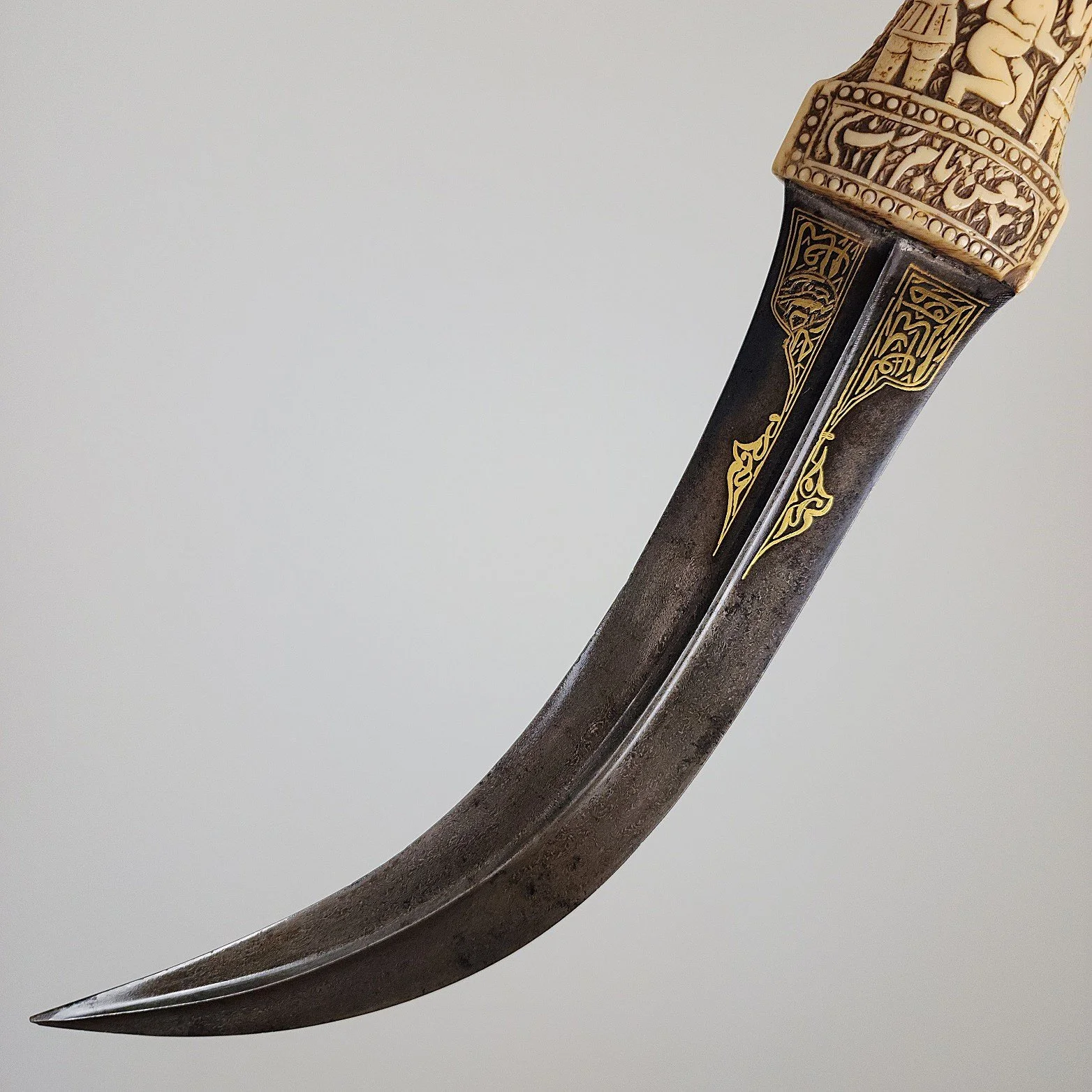Qajar Khanjar
Qajar Khanjar
Isfahan(?), Qajar Dynasty (Iran)
Mid- 19th century (ca. 1830 - 1850)
Steel, gold, ivory
Blade: 23,2cm
Hilt & Blade: 35,2cm
Hilt, Blade, Sheath: -cm
Collection Date: 2020
Collection Number: 145
Ex. San Diego, California, USA Private Collection (2020)
A finely carved ivory khanjar from the Qajar Dynasty period of Iran. One of many examples of different styling during the Qajar period where Islamic art was revived from earlier periods in time.
The curved double- edged steel blade has a pronounced central ridge tapering to a point. The steel is of high quality dark and light contrast of Persian Kara Khorasan mottled or woodgrain wootz. A panel at the base exhibits gold damascened floral motifs. Consistent on the reverse side, but with a stamped cartouche of untranslated script within the panel, possibly a maker’s / owner’s name or place of origin.
The hilt is composed of a large piece of walrus ivory, elaborately carved with 10 figures in relief on each side. Presumably, these figures represent a Sassanian king, his wife, and courtiers in the style of "farangisazi," or Europeanizing images of imitation of the Persian subject. Relief carved scripts on the top and bottom of the hilt of a Persian verse in nasta'liq Urdu inscription that is roughly translated, "Shining is the sharp blade / It's named is khanjar / That which splits a thorn / Is the amazing khanjar". Missing its sheath.
A very fine example with minimal wear and crisp carvings being highly detailed. The fine Kara Khorasan blade retains a clear and consistent pattern throughout. The black wootz was popular in Isfahan and widely traded throughout the Ottoman and Indian Empires.
[1] Manouchehr, Moshtagh Khorasani. 2006. “Arms and Armor from Iran”. Page 590. Cat. 223
[2] Thom Richardson. 2018. “Islamic Arms And Armour”. Page 88. XXVID.64
[3] Pinchot, Oliver S. 2014. “Arms of the Paladins”. Page 27; Cat. 3-15
[4] Skralivetsky, Evgeny Borisovich. 2013. “Eastern Weapons”. Page 172
[5] Hales, Robert. 2013. "Islamic and Oriental Arms and Armour". Page 88: No.200
[6] https://www.metmuseum.org/art/collection/search/31452
[8] https://oriental-arms.com/product/fine-and-large-qajar-persian-khanjar-dagger/
[9] http://www.oriental-arms.co.il/item.php?id=1838
[10] http://www.oriental-arms.co.il/item.php?id=5057
[11] http://www.oriental-arms.co.il/item.php?id=2925
[12] https://www.rswordantiqueblades.com/sold#/new-gallery-750/
[13] https://www.ancientarmsinc.com/work-avenue#/fantastic-huge-khanjar-qajar-period/

















